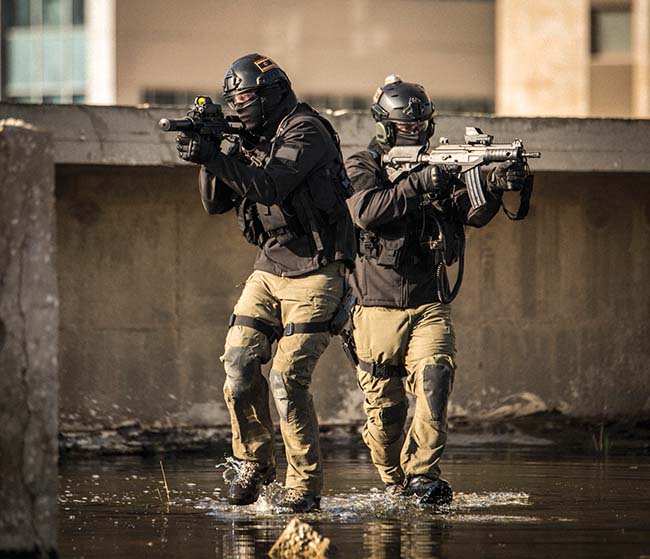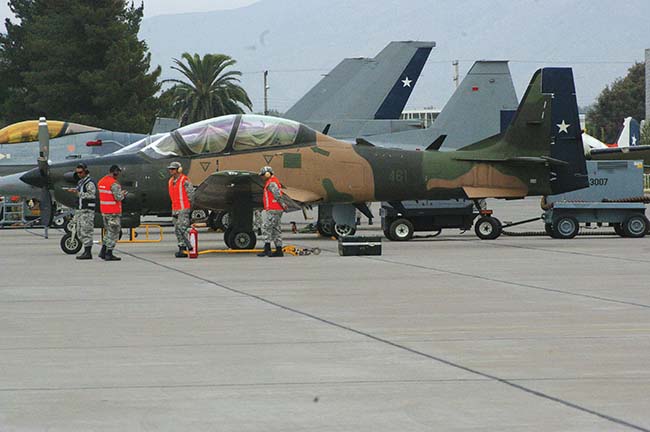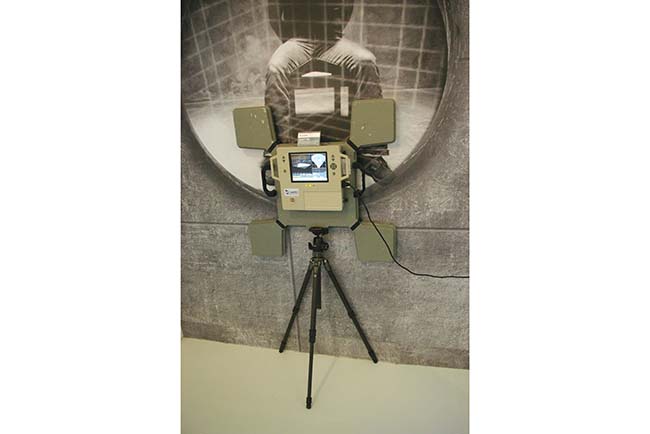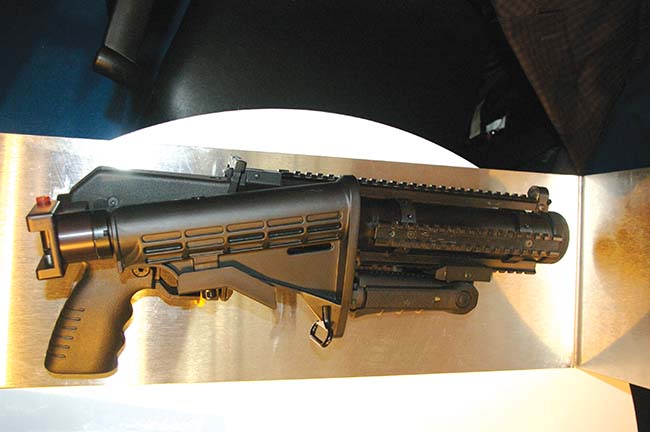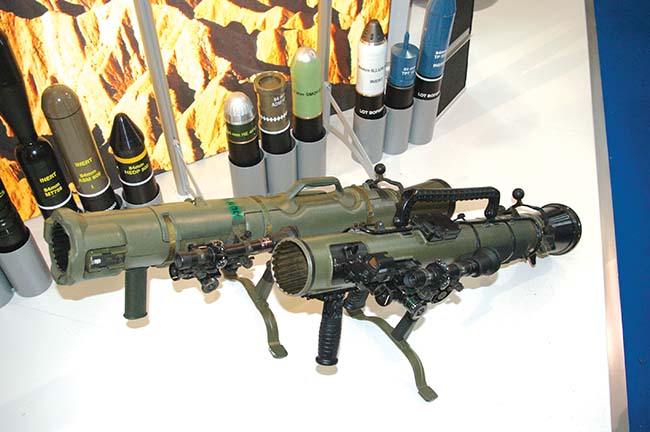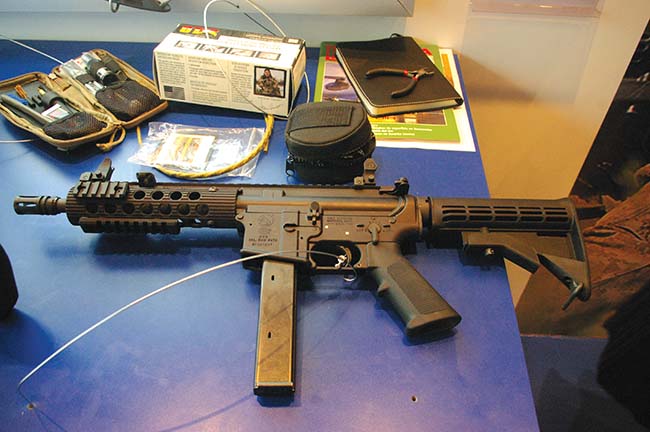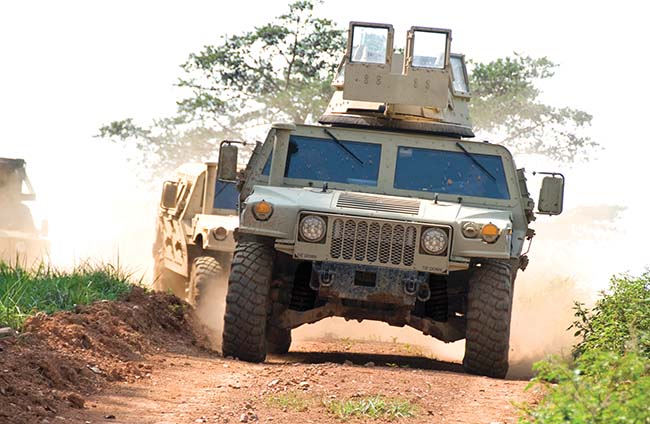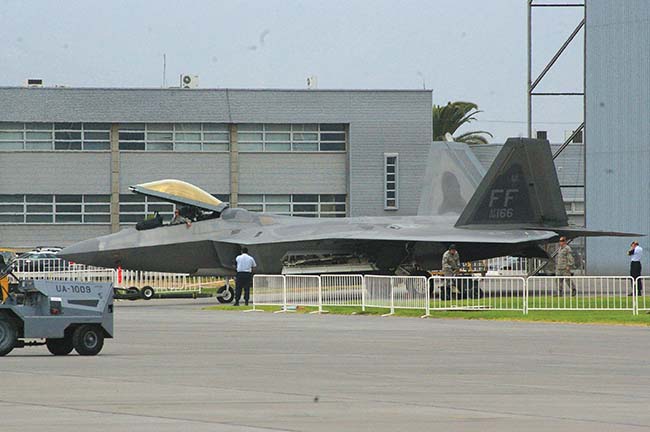Brazil announced in September 2015 its intent to purchase seven antiaircraft batteries from Russia. The order is for five Pantsir-S1, and two Igla-S Man-Portable-Missile-Systems (MANPADS) batteries. The South Americans have been so eager to acquire more MANPADS that during the negotiations in March 2014 it was indicated that the country was ready to engage in the local-production of the 9K338 missile.
The first Igla arrived to Brazil in 1994, when 56 launchers were acquired, along 112 missiles. These early Iglas were of the SA-18 type. In 2011, Brazil indicated that was looking for another 250 missiles and 56 launchers of the Igla-S/SA-24, and two years later, Brazilian representatives had concluded a MOU with Rosoboronexport, looking into purchasing additional systems. This appeared to culminate in 2015 when it was announced the purchase of the Pantsir and Igla-S; however, the following October, the government indicated that it was still reviewing finances to conclude the deal.
In any case, the Igla is the most important MANPADS in the hands of the Brazilian military. The missile can be fired by one gunner from the shoulder, in either a standing or kneeling position. The PAMS-Igla automatically produces information on elevation and lead angles, and is able to operate in cold, arid and humid tropical climates. The Super Igla (code name SA-24 “Grinch”) depends on the 9K338 missile, a weapon developed in 2008, with a reach of 6 km. It can be operated at night, and has a 2.5kg warhead with proximity fuse. The missile can reach a target at altitudes of 3500 meters, 5.2 Km away, travelling at 1,440 km / h. It is known that a sub-unit of the 3GDAAE (Nu3rd AAA Group), at the Anápolis Air Base (BAAN) at Goiás, Brasilia, was equipped with the Igla 9K338 while other units use the Igla/SA-18 based on the 9K38 missile, which like the more advanced SA-24, it is designed to defeat low flying targets. The missile’s IR-seeker is specifically designed to distinguish between countermeasures (such as flares) and the targeted aircraft.
The Air Defense Strategic Project (PEE DAAe) envisioned the Igla MANPADS for field protection, and the Swedish RBS-70 man-portable very-short-range air defense system (VSHORAD) for point defense. The RBS-70 can reach targets up to 8Km away, flying as high as 5000 meters. Moreover, it depends on a laser guidance system, to make it immune to jamming. This means that it fires a laser beam missile, so the gunner must maintain visual tracking of the target. The operator receives information on the target from a local laptop combat control terminal (denominated SLT), sent from a defense radar station or C4IR. Once the target is acquired, and the laser is switched on, an IFF signal is sent. Once the target is confirmed and the gunner is tracking it, the firing of the missile is made possible.
The Brazilian Army ordered sixteen RBS-70 firing posts in 2014. The systems were acquired from Saab Dynamics under a $12.3 million contract, and included Mk II missiles (the most advanced variant), simulators, night vision equipment, test sets, maintenance tools, spares, associated equipment, technical documentation, and training. The RBS-70 was acquired specifically to protect Brazil’s strategic infrastructure, and the major sporting events in the country. Indeed, a few RBS-70 firing units deployed to the 2014 FIFA World Cup; it is also scheduled to deploy to protect the 2016 Summer Olympics in Rio de Janeiro. The RBS-70 equip the 1st Anti-Aircraft Artillery Brigade and Anti-Aircraft and Coastal Artillery School.
Until recently, the Brazilian air defenses depended on four Roland II Surface to air missile systems, mounted on a modified Marder chassis, thirty-eight Oerlikon GDF-001 35mm antiaircraft cannons, twenty-four 40mm Bofors L/70 and one hundred and three Bofors L/60. The Roland II system were retired, but the Bofors continue to provide basic air defense around Brazil. There were also a number of M45/M55 machine gun mounts. It is understood that several M55 turrets were actually modernized and repowered in the 1980s and some even upgraded with surplus 20mm to bring them to IAI TCM-20 standards.

The RBS-70 pedestal mount examined in September 2015 was mounted on a flat bed of a Marruá jeep type vehicle. We think that the upgraded M55/TCM turret can easily be accommodated in similar manner than the M55 on the same type of vehicle. Better yet, an armored Marruá M27 chassis can be used. The Marruá AM200CD 4×4 vehicle is manufactured by Agrale S.A in Caxias do Sul, RS, Brazil. Recently, the South African company OTT Technologies from Pretoria designed and manufactured the M27 ballistic cab and integrated it to the AM200CD 4×4 chassis, and this resulted in the M27 protected pickup LAPV (lightly armored protected – or police – vehicle). The vehicle has a crew of up to 5, and is powered by an MWM Euro 3 engine or Cummins Euro 5 engine. OTT is a well-known South African company experienced in the design, development and manufacture of mine protected vehicles and cash in transit armored vehicles. It is noted that the RBS 70 batteries are integrated to a COAAe equipped with an S-788BR-RF electronic hardware already mounted on a modified and armored Marruá.
Between May 2013 and July 2015, Brazil took delivery of 13 German surplus Krauss-Maffei Wegmann (KMW) Gepard 1A2 self-propelled 35 mm twin gun system. These vehicles have been distributed among the 11th Self-Propelled AAA Battery (SPAAAB) from Paraná, and the 6th (SPAAAB) at Rio Grande do Sul. The acquisition of the hardware and systems has been made possible through the Brazilian Army Project Acquisition Office (EPEx). This includes the deployment of the SABER M60 (60 km range) man-portable low-altitude radar and Mobile Anti-Aircraft Operations Center (Centro de Operação de Artilharia Antiaérea – COAAe) developed in cooperation by BRADAR (Embraer Defesa & Segurança) and the army’s Technological Center (CTEx). It is also in the process of acquiring the SABER M200 (20 km range) mobile long-range medium altitude air defense radar system.
Several COAAe were operational in 2010, and they are now tasked to provide information to the RBS 70 and Gepards. With this equipment, the Army established the 12th AAA Group (GDAAE) in Manaus (Amazonas State) and the Supply and Maintenance AAA Battalion in Osasco (São Paulo). The equipment has been distributed among the 1st AAA Brigade (1ª Bda AAAe), with HQ at Guarujá, with its GDAAE distributed as follow: 1st (Rio de Janeiro), 2nd (Praia Grande), 3rd (Caxias do Sul), 4th (Sete Lagoas), and the 11th (Brasilia). In addition, MANPADS have been provided to the 12th Light Infantry Brigade, the Parachutist Brigade, and the 9th Infantry Brigade.
Between 1994 and 1997, the Brazilian Navy also took delivery of 160 Mistral MANPADS for installation as point defense on its vessels and for use by the Brazilian Marines. These are mounted in the SADRAL (6-cell) and SIMBAD (2 cell) configurations.
In October 2015, the contract for the seven Russian AAA Batteries appeared to fall apart when the Brazilian political and economic crisis had brought negotiations to a halt.






